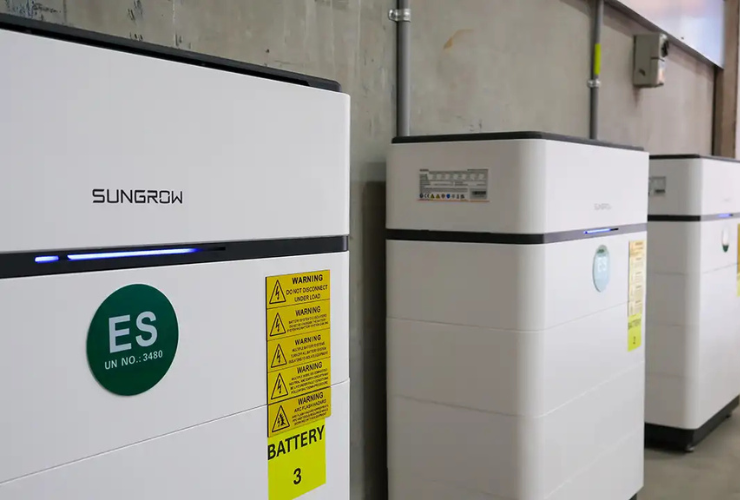
The Real Cost of Choosing the Wrong Size Battery
With the Federal Battery Rebate now live across Australia, solar households are racing to install batteries — but many are making a costly mistake: buying the wrong size.
In the past, homeowners were told to “start small” with modular systems and expand later. But with this one-time rebate, that advice is no longer relevant. If you choose a battery that’s too small, the financial consequences can include lower savings, a shorter lifespan, and expensive upgrades later, without rebate support. So, how do you get the size right the first time?
Why “Start Small” Is Outdated Advice
The Federal Battery Rebate is a limited opportunity. You only get to claim it once. That means if you undersize your battery and want to upgrade later, you’ll be paying full price for any additional storage.
A few years ago, a 5 or 7 kWh battery might’ve seemed sensible. But today, more Australians are choosing 14, 24, even 30+ kWh batteries — because they know this rebate won’t last forever.
Step 1: Know Your Solar Output
Before you choose a battery, you need to know how much excess energy your solar system generates — that’s what charges your battery.
Head to a solar output calculator (like the one at YourEnergyAnswers.com) and enter your:
Postcode
System size
The tool will show you how much energy your panels typically generate month by month. Subtract your daytime usage to estimate how much surplus power is available for storage.
Example:
Solar generates 40 kWh/day
You use 25 kWh during the day
You have ~15 kWh/day available to store in a battery
Step 2: Understand Your Night-time Usage
A big reason people go too small is that they underestimate how much energy they use after dark. Think about everything that runs in your home between 6 PM and 7 AM:
Air conditioning or heating?
Kitchen appliances?
Laundry or dishwasher cycles?
EV charging?
Entertainment systems?
Most families use at least 10–12 kWh overnight, and many use more, especially if multiple appliances run in the evening. If your battery runs dry by midnight, you’ll be back to buying expensive grid power for the rest of the night.
Step 3: Plan for the Future
Choosing a battery isn’t just about now — it’s about the next 10 to 15 years. Things to consider:
Will you buy an EV in the next few years?
Are you planning to install more air conditioners?
Will your kids grow into energy-hungry teenagers?
Is your home likely to increase in energy demand?
Even if your daily use is modest today, chances are it will grow. That’s why many experts recommend adding an extra 30% on top of your calculated need to future-proof your system.
Cheap Batteries Are a Trap
The market is flooded with low-cost offers — some promising 25+ kWh systems for under $3,000. These deals are often:
Poorly supported
Poorly made
Sold by companies that will disappear within 2–3 years
Warranties from these outfits are worthless if the retailer or manufacturer shuts down. And removing or replacing a failed battery can be a major expense, especially if safety is compromised.
With battery systems storing significant energy, cheap and untested products pose real risks, including fire hazards and system failures.
Bigger Batteries Last Longer
A little-known fact: battery warranties are tied to usage cycles, not just time. If you heavily cycle a small battery (e.g., charge/discharge 3–5 times per day), you’ll hit the cycle limit well before the warranty period ends. In contrast, a larger battery spreads the load and is used more gently, extending its useful life.
Oversizing isn’t wasteful — it’s a way to protect your investment and make it last longer.
Bigger Batteries Work Better in VPPs
Virtual Power Plants (VPPs) allow you to sell excess battery energy back to the grid during price spikes. But this only makes sense if you:
Have time-of-use or dynamic tariffs
Can you spare some of your battery capacity for trading
With a small battery, you barely cover your home’s needs. But with a larger system, you can set limits (e.g., keep 30% for your home, sell the rest) — and turn stored energy into extra income.
Don’t Count on V2G Alone
Some people plan to rely on Vehicle-to-Grid (V2G) tech, using their EV battery to support their home. While promising, it’s not yet widespread and may not be reliable enough to replace a dedicated home battery. More importantly, if your EV powers your home overnight, it might not have enough charge to get you to work in the morning. Use V2G as a bonus, not your primary energy strategy.
Final Word: No One Regrets Going Bigger
Most people who go too small end up regretting it. Batteries that are undersized wear out faster, offer less protection during outages, and leave you buying grid power at night. But people who go bigger? They rarely complain. In fact, they’re more prepared, more resilient, and better positioned to benefit from future energy changes.




